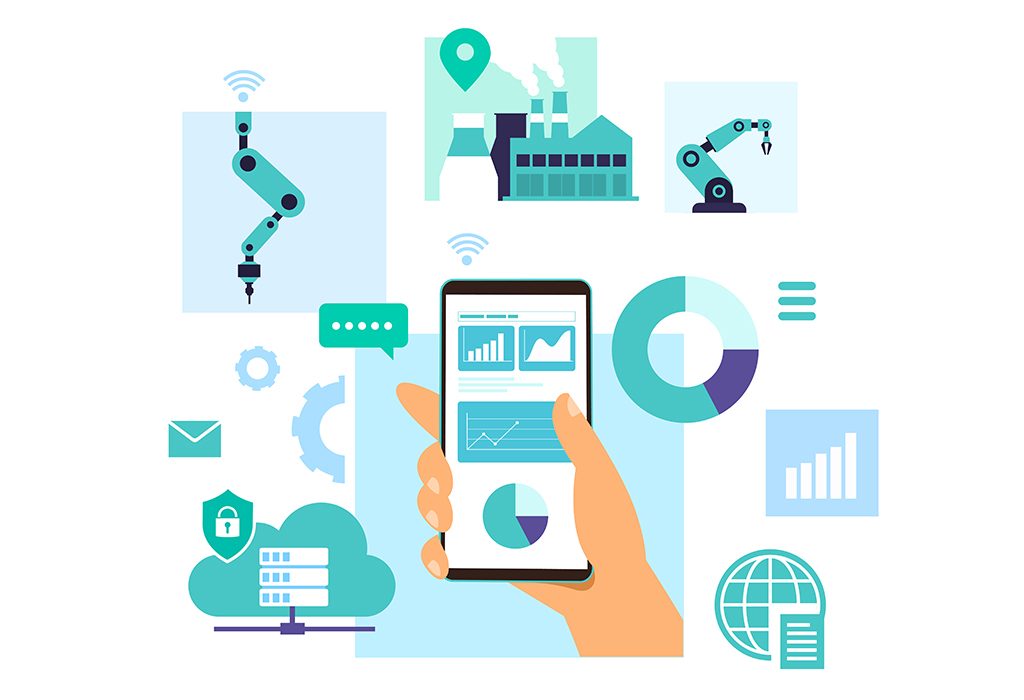There’s no denying it, servitization has been on the minds of thought leaders and manufacturers across the globe, and for good reason. This system provides an all-in-one, value-added approach to product delivery and support, making it an attractive option for companies looking to increase revenue and improve customer satisfaction.
Author Nick Saraev

Photo: Freepik
However, making major changes to the way your company runs can be clunky and slow, especially when you don’t have a clear strategy for transformation. Traditional, monolithic digital solutions are not only hard to learn but can encourage data silos and lack the flexibility to keep up with continuously changing customer expectations.
At our recent aftermarket event, Herbert Pesch and Dennis Houtzager of Valtech zoomed in on this issue and offered a solution, composable manufacturing. By planning for flexibility from the start, you can save your team countless headaches down the road.
Stages of Servitization
When moving towards a servitization model, a company must understand that it is a process. You can not jump directly from a traditional business model to a service-based one. You need to build up the infrastructure, technology, and data to progress through each of the following phases.
- Ownership-Based Services – Selling the product
- Usage-Based Services – Offering services around the product
- Outcome-Based Services – Offering data-driven services beyond the product
- Pure Services – Orchestrating an ecosystem
Most companies within the manufacturing sector are currently at a usage-based services level and are starting to transition towards an outcome-based model. This shift requires teams to investigate tools like predictive maintenance and data analytics.
Solving the Sales Conundrum
If you are going to successfully make this shift, getting your team to fully adopt the new tech is vital. 31% of digital leaders name it as the most challenging part of moving toward a servitization model. So how can you ensure your team can get on board?
Digital and Offline Revenue Are Equal
Ensure that a sale is a sale, whether it’s online or offline. This means systems like bonuses for your sales team and other incentives should be available no matter what sales channel they use.
This also requires your sales team to be capable of selling the solutions as they become available. Ensure you have a pricing model and information available to them upon launch.
C-Level Commitment
Your C-suite is one of the most valuable assets when it comes to implementing a major shift in your organization’s strategy. They can set the tone and expectations for the team and act as role models for embracing the change.
Change Management
It’s important to acknowledge that change can be difficult for some team members. By providing training and support, you can help alleviate any resistance to the shift. Encourage open communication and address any concerns or questions they may have.
Smart Client Onboarding
From the moment you build up these services, you need to bring your clients on board. By listening to their feedback and keeping the shift personal, you can boost adoption both in your sales team and your clientele.
Dealing With Lack of Digital Capabilities
Getting personnel on board with changes is only half the battle when it comes to digitization and servitization. As you move toward a service-based model, you essentially move from being an engineering company to creating and maintaining software and data to better serve clients.
Companies must build their capabilities by building a digital hub, and working with partners until they no longer need outside digital infrastructure to make their operation run.
Create Multi-Disciplinary Teams
Rather than allowing your digital tech teams to run wild and leave the rest of your organization behind, find ways to integrate them directly into your business teams to form a business-driven unit that has digital capabilities embedded into their process
Have Data as a Backbone
With servitization, data is the primary asset that enables companies to provide value-added services. It’s crucial to have a strong data management system in place to support your service offerings.
Data democratization is also key, as it allows team members to make data-driven decisions with up-to-date information.
Break Down Silos
Your sales, marketing, and service teams may have previously operated independently, but now they must work together to provide a seamless customer experience. This means breaking down communication barriers and creating a cohesive team that shares data and insights to better serve customers.
The Composable Manufacturer
The B2B landscape is rapidly changing as a new generation of leaders steps up to the plate. This means that the need for agility and adaptability has never been higher, as clients look to engage with businesses on different platforms and keep things moving toward digital solutions.
Your company needs to be prepared and build these capabilities, which can be extra challenging when you’re facing information silos, limited integration, and slow cultural change within your organization.
Composable manufacturing is a key strategy to overcome this. You must build your entire operation around being flexible, agile, and able to shift with the market. Getting locked into rigid data and organizational structures makes it impossible to keep up with the changing demands of your clients.
Modular Design
A vital component of composable manufacturing is modular design. When you build and use one complete software solution that can do everything, you’ll often find that it doesn’t do everything as well as you need.
Instead, a composable strategy will have you building several different solutions that can come together to form a comprehensive ecosystem. This allows you to bolster individual aspects such as e-commerce or field service maintenance without affecting the entire stack.
Designing your process like this allows you to shift in and out capabilities when needed, and makes it easier to combine everything. Your entire system will be broken up into the following capabilities, each with smaller, more specific capabilities within them.
- Digital Experience Capabilities – Marketing, Customer, Content
- Digital Service Capabilities – Collaboration, Assets, Knowledge
- Digital Commerce Capabilities – Ordering, Fulfillment, Catalogue
If you are wanting to create a customer portal, you will need several of these capabilities brought together into one touchpoint, including
- Catalogue
- Ordering
- Collaboration
- Assets
- Knowledge
- Customer
However, this portal won’t be the only place you need these capabilities. Having each capability as its own API and data-driven module allows you to piece together systems that speak with one another and keep all your information up-to-date. This integration makes data democratization possible, which breaks down silos and ensures everyone is on the same page.
Conclusion
As with any change, the most important thing to remember when moving towards composable manufacturing and servitization as a whole is that you can’t do everything at once. Taking your time and going piece by piece, getting help when you need it, and ensuring things are done right the first time are vital to success.
If you continuously take steps, while keeping everything well-organized, eventually you will have a fully customizable set of capabilities that can be configured to build any touchpoint you and your clients need. This flexibility will be invaluable as you navigate the ever-shifting future.






























